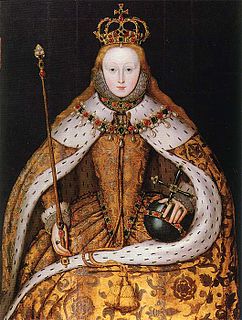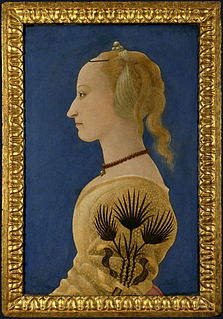Costume is the distinctive style of dress or cosmetic of an individual or group that reflects class, gender, profession, ethnicity, nationality, activity or epoch. In short costume is a cultural visual of the people.

A hairstyle, hairdo, haircut or coiffure refers to the styling of hair, usually on the human scalp. Sometimes, this could also mean an editing of facial or body hair. The fashioning of hair can be considered an aspect of personal grooming, fashion, and cosmetics, although practical, cultural, and popular considerations also influence some hairstyles.

The hanbok or Chosŏn-ot is the traditional Korean clothes. The term "hanbok" literally means "Korean clothing".
A frog fastener, also known as Chinese frog closures or pankou knots is an ornamental braiding, consisting of a button and a loop, for fastening the garment without an overlap. The purpose of frog fasteners is to provide a decorative closure made of cording for the garment. The frog fastener originated from China and was later adopted by the military of Western countries before use in civilian clothing for both genders, such as overcoats, spencers, and pelisses.

The dupattā is a shawl traditionally worn by women in South Asia. The dupatta is currently used most commonly as part of the women's shalwar kameez outfit, and worn over the kurta and the gharara.

A gown, from the Saxon word, gunna, is a usually loose outer garment from knee- to full-length worn by men and women in Europe from the Early Middle Ages to the 17th century, and continuing today in certain professions; later, gown was applied to any full-length woman's garment consisting of a bodice and attached skirt. A long, loosely fitted gown called a Banyan was worn by men in the 18th century as an informal coat.

Maira Kalman is an Israeli-born American illustrator, writer, and blogger. She is known for her playful and witty illustrations, featured in publications such as The New York Times and The New Yorker, and the children's books that she has both written and illustrated.

A justacorps or justaucorps is a long, knee-length coat worn by men in the latter half of the 17th century and throughout the 18th century. The garment is of French origin, and was introduced in England as a component of a three-piece ensemble, which also included breeches and a long vest or waistcoat. This ensemble served as the prototype of the frock coat, which in turn evolved into the modern-day three-piece suit.

A dress is a garment traditionally worn by women or girls consisting of a skirt with an attached bodice. It consists of a top piece that covers the torso and hangs down over the legs. A dress can be any one-piece garment containing a skirt of any length, and can be formal or casual.

Venetian ceruse, also known as blanc de ceruse de Venise and Spirits of Saturn, was a 16th-century cosmetic used as a skin whitener. It was in great demand and considered the best available at that time. It is similar to the regular ceruse, although it was marketed as better, more exclusive and expensive than the regular ceruse variant. The regular ceruse white pigment is a basic lead carbonate of chemical formula 2 PbCO
3·Pb(OH)
2 while the mineral cerussite is a simple carbonate of lead.

The koukoulion is a traditional headdress worn by monks and certain patriarchs in Eastern Christianity.

A peascod belly is a type of exaggeratedly padded stomach that was very popular in men's dress in the late 16th and early 17th centuries. The term is thought to have come from "peacock," or from the form of contemporary plate armour. Sometimes it was called a 'goose belly.'

Chima is a generic term for the skirt worn together with jeogori, or a short jacket in hanbok, Korean traditional clothing. It is also referred to as sang or gun in hanja in the Korean language.
The Butterick Publishing Company was founded by Ebenezer Butterick to distribute the first graded sewing patterns. By 1867, it had released its first magazine, Ladies Quarterly of Broadway Fashions, followed by The Metropolitan in 1868. These magazines contained patterns and fashion news.

A xhamadan or xhamadani is a traditional wool garment worn by Albanian men. It can be sleeved or sleeveless. The sleeveless xhamadan is only one type of the Albanian vest, the other two being the xhamadani me reshme, and the xhamadani fermele. The xhamadani me reshme went out of use around the beginning of the 20th century. whereas the xhamadan and the xhamadani fermele continue to be used in traditional festivities. A good xhamadan is usually richly embroidered, sometimes in gold: in the past its quality revealed social rank.

Portrait of a Lady in Yellow was painted by the Florentine artist Alesso Baldovinetti sometime in the second half of the 15th century, most likely c. 1465. For centuries the work was mis-attributed; it was purchased by the National Gallery London in 1866 as a portrait of Countess Palma of Urbino, attributed to Piero della Francesca. In 1911 art historian Roger Fry established that it was by Baldovinetti. However, there is no evidence of the source of the commission, and doubt remains as to the identity of the sitter; the most plausible theory is that she is Francesca degli Stati of Urbino.

An attifet is a heart-shaped headdress with a point that dips over the forehead, worn by European women in the 16th and 17th centuries. It was first worn by Catherine de Medici and Mary Queen of Scots.

A kiss curl describes a lock of hair curling onto the face and usually plastered down. Although the curl could be flattened with saliva, soap or hair lotion was more typically used.

Perizoma is a type of loincloth that originated with the Minoan civilization in Crete. Surviving depictions show it being worn by male and female acrobats.

Katzeb was an article of dress encircling the body, at the waist with ends hanging in the front. It was a kind of sash also called Patka.

















